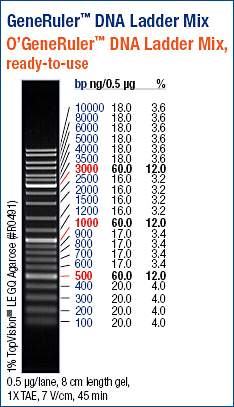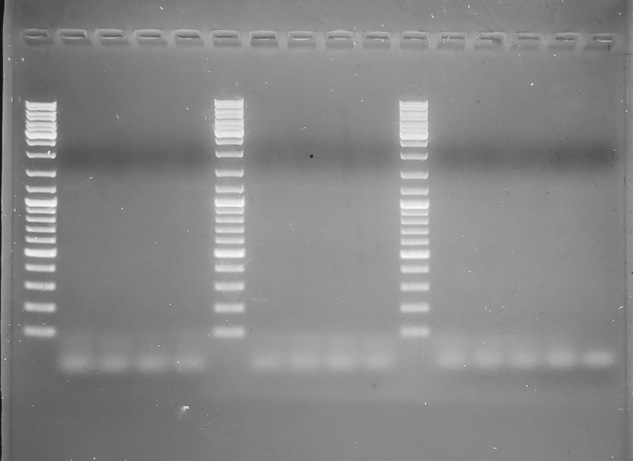UPDATE 20191125
Since the results I obtained on my final attempt to get this to work failed, I decided to double-check the primer sequences.
Well, I ordered/used the wrong sequences! The two general Crassostrea spp. primers ordered were the 28s primers listed in that paper, instead of the cytochrome oxidase primers! I’ve ordered the correct universal CO primers [which are actually listed in this paper: (Folmer, O., M. Black, W. Hoeh, R. Lutz & R. Vrijenhoek. 1994. DNA primers for amplification of mitochondrial cytochrome C oxidase subunit I from diverse metazoan invertebrate. Mol. Mar. Biol. Biotechnol. 3:294–299.) and will re-run this.
I’m leaving the original post below for posterity.
Primers and cycling parameters were taken from this publication:
| SR ID | Primer Name | Sequence |
|---|---|---|
| 1727 | COreverse | CAGGGGGCCGTTCGCGGTCAACGCT |
| 1726 | COCsi546r | AAGTAACCTTAATAGATCAGGGAACC |
| 1725 | COCgi269r | TCGAGGAAATTGCATGTCTGCTACAA |
| 1724 | COforward | GGGACTACCCCCTGAATTTAAGCAT |
Instead of running a multiplex PCR as before, I ran each set of species-specific primer pairs independently.
The COforward/reverse primers should amplify any Crassostrea spp. DNA (i.e. a positive control - 697bp) and the other two primers will amplify either C.gigas (Cgi269r - 269bp) or C.sikamea (Csi546r - 546bp).
Master mix calcs:
| Component | Single Rxn Vol. (uL) | Num. Rxns | Total Volumes (uL) |
|---|---|---|---|
| DNA | 4 | NA | NA |
| 2x Apex Master Mix | 12.5 | 18 | 225 |
| COforward (100uM) | 0.15 | 18 | 2.7 |
| reverse primer (100uM) | 0.10 | 18 | 1.8 |
| H2O | 8.25 | 18 | 148.5 |
| 25 | Add 21uL to each PCR tube |
Cycling params:
95oC for 10mins
30 cycles of:
- 95oC 1min
- 51oC 1min
- 72oC 1min
72oC 10mins
Used the GeneRuler DNA Ladder Mix (ThermoFisher) for all gels:

RESULTS
GEL: C.gigas-specific primers:

GEL: C.sikamea-specific primers:

GEL: Crassostrea spp. primers:

Well, it looks like the two species-specific reverse primers don’t seem to work with the Crassostrea spp. forward primer.
However, the Crassostrea spp., despite the fact that they function properly (in that they amplify in all Crassostrea DNA), they don’t produce the expected band size that’s mentioned in the paper (697bp). Talking with Steven, I don’t think we’re going to pursue much more of this.